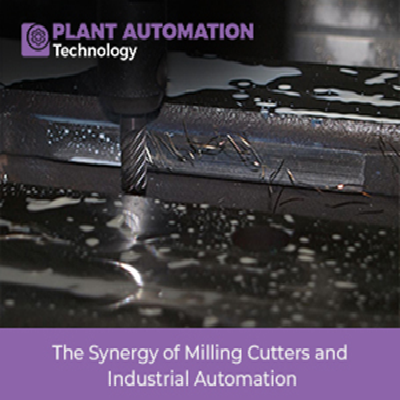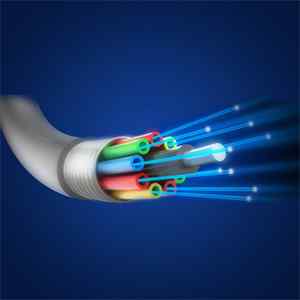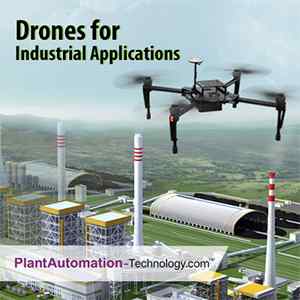The Synergy of Milling Cutters and Industrial Automation

Introduction
Milling cutters have long been a vital tool in many production processes, allowing precise material shaping and cutting. However, the integration of milling cutters with automated systems has revolutionized manufacturing with industrial automation. This synergy of milling cutters and industrial automation has increased productivity, and significantly improved efficiency, accuracy, and overall operational performance. In this essay, we will investigate the tremendous impact of industrial automation on milling cutters. We will highlight the significant benefits and breakthroughs of this potent combination.
Impact of Industrial Automation on Milling Cutters
Increased efficiency and productivity
Milling cutters integrated with industrial automation have led to a remarkable increase in efficiency and productivity in manufacturing processes. Automation enables the seamless execution of repetitive milling tasks with minimal human intervention. This reduces cycle times and eliminates errors caused by fatigue or human oversight. By automating the loading and unloading of workpieces, tool changes, and other repetitive operations, manufacturers can achieve higher throughput and optimize production schedules.
Moreover, industrial automation allows continuous operation, enabling milling cutters to work around the clock without manual intervention. This uninterrupted operation optimizes machine utilization, ensuring maximum output and minimal downtime. The ability to program and store multiple machining profiles also facilitates quick changeovers between different workpieces, further enhancing productivity and reducing setup times.
Improved Accuracy and Precision
Industrial automation has revolutionized milling precision and accuracy. Automated systems, when coupled with advanced control technologies and sensors, enable real-time monitoring and adjustment of milling parameters. This ensures consistent and precise cutting depths, feed rates, and spindle speeds, resulting in superior surface finishes and dimensional accuracy. Feedback mechanisms allow the automated system to make instant adjustments, compensating for variations in material properties or tool wear. This maintains the desired precision levels throughout the machining process.
Furthermore, automation eliminates human error risks during milling operations. With advanced computer numerical control (CNC) systems, complex milling paths can be programmed with high precision, ensuring consistent and repeatable results. The elimination of manual intervention also reduces the chances of human-induced errors, such as misalignment or improper tool handling, leading to higher overall product quality and reduced scrap rates.
Enhanced Safety and Workforce Optimization
Industrial automation improves operational performance and workplace safety. By automating hazardous milling tasks, such as heavy material removal or operations involving high-speed rotating tools, the risk of accidents and injuries to human operators is significantly reduced. Automated systems can execute these tasks with precision and reliability, eliminating human proximity to potentially dangerous operations.
Additionally, milling cutters integrated with industrial automation allow manufacturers to optimize their workforce. Skilled operators can focus on tasks that require critical thinking, problem-solving, and decision-making, while routine milling operations are efficiently handled by automated systems. This leads to better resource allocation and allows companies to utilize their skilled workforce in areas that add additional value to the overall manufacturing process. This fosters a more efficient and productive work environment.
Cost Reduction and Waste Minimization
Milling cutters integrated with industrial automation bring significant cost-saving opportunities and waste-minimization benefits to manufacturers. Automated systems allow precise material removal, minimizing waste during milling. By optimizing cutting parameters and implementing advanced toolpath strategies, manufacturers can achieve higher material utilization rates, reducing raw material costs and minimizing waste generation.
Industrial automation enables real-time monitoring of tool wear and performance. By utilizing sensor technologies and condition monitoring systems, manufacturers can detect tool wear or damage at an early stage. This allows for timely tool replacement or regrinding. This proactive approach extends tool life but also prevents costly issues such as tool breakage or surface defects caused by worn-out tools.
Furthermore, milling processes automate manual adjustments and fine-tuning, reducing the setup and calibration time required for each job. This streamlines production workflows and reduces labor costs associated with manual machine setup and operator intervention.
Integration with Industry 4.0 and Data Analytics
The interaction of milling cutters with industrial automation is consistent with the principles of Industry 4.0, the fourth industrial revolution characterized by the integration of digital technology into manufacturing processes. Automation systems with milling cutters create massive volumes of data that can be used for optimization and predictive maintenance.
Manufacturers can collect real-time data on machining parameters, tool performance, and environmental variables by connecting automated milling equipment to the Industrial Internet of Things (IIoT). Advanced analytics techniques can be used to analyze this data to generate significant insights into process efficiency, tool life, and potential areas for improvement. These insights help manufacturers make data-driven decisions, optimize machining operations, and apply preventative maintenance programmes, boosting productivity and cost-effectiveness even more.
Flexibility and Adaptability
Industrial automation allows for increased flexibility and adaptability in milling operations. Automated systems can easily switch between different machining profiles, accommodating varying product designs or customization requirements. With the ability to quickly reprogram and reconfigure automated milling systems, manufacturers can respond rapidly to changing market demands and production schedules. This flexibility improves time-to-market, reduces lead times, and enhances manufacturing agility.
Scalability and Scalable Production
Industrial automation enables scalable milling production. With automated systems, manufacturers can easily replicate and scale up production processes without compromising quality or efficiency. By utilizing standardized milling programs and automated tool changes, manufacturers can rapidly adjust production volumes to meet market demands. This scalability is particularly beneficial in industries where demand fluctuations are common, allowing manufacturers to efficiently scale their production capacity up or down as needed.
Furthermore, automated systems provide consistency in milling operations across different batches or production runs. This consistency ensures uniform product quality and enables manufacturers to establish and maintain high standards throughout the production process. Whether producing a small batch or large quantities, the integration of milling cutters with industrial automation ensures the same level of precision, accuracy, and productivity is maintained.
Technological Advancements and Innovation
The partnership between milling cutters and industrial automation has greatly contributed to technological advancements and innovation in the industry. Automation technologies are constantly expanding and improving, integrating advanced features like artificial intelligence (AI), machine learning, and adaptive control algorithms. These developments enable automated milling systems to learn from previous experiences, optimize cutting parameters, and swiftly adapt to changing conditions in real time.
Additionally, automation integration with milling cutters has paved the way for new tool designs and cutting techniques. Automated systems can handle complex milling operations that were previously challenging or impossible to execute manually. This has led to the exploration of more advanced tool geometries, coatings, and cutting strategies, further enhancing the milling processes' capabilities and efficiency.
Conclusion
Milling cutters and industrial automation benefit manufacturing. Automation technologies integrated into milling operations enable productivity and competitiveness through higher efficiency and precision, improved safety, cost reduction, and data-driven optimization. Manufacturers may achieve better operational excellence, provide high-quality products, and stay ahead in today's dynamic market scenario by embracing automation. Embracing the synergy of milling cutters and industrial automation is critical to maximizing manufacturing processes. This is also critical to surviving in the age of enhanced digitalization and automation.







